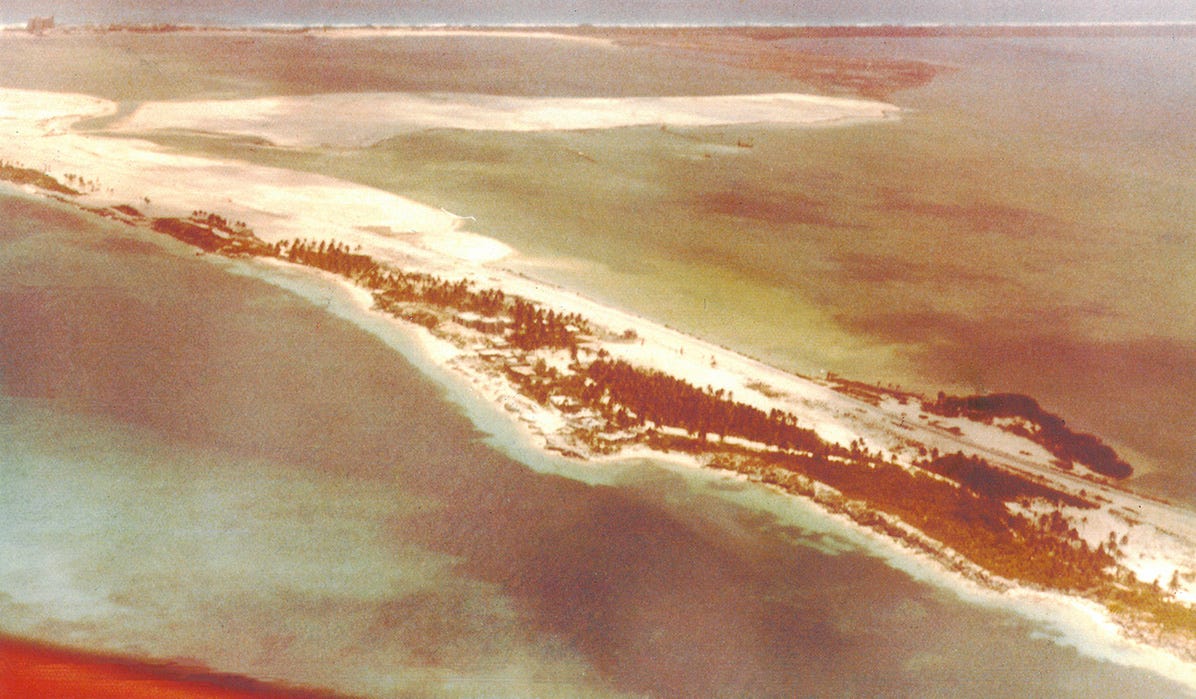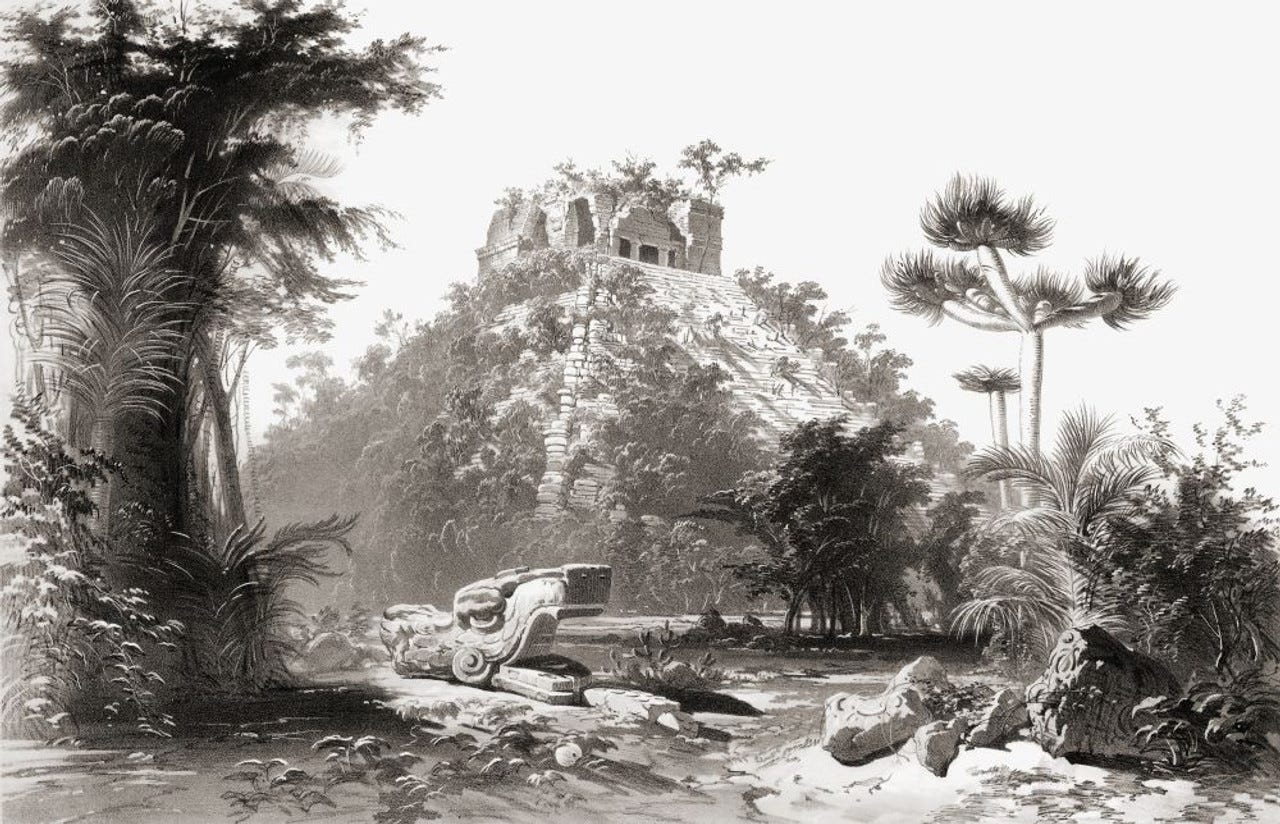
Is Chichen Itza one of the Maya’s most revered and renowned pyramid sites or a glorified shrine-museum concocted by slick politicians to reap tourist dollars, like Cancun?
It’s no secret that the Mexico National Tourist Corporation (MNTC) designed Cancun with the intention of creating a luxury destination that would pull in coveted currency to fill state and government coffers—and if some spilled over into the private sector, so much the better.
In 1967 the Mexico government’s aim was to find the best locale for an international tourist resort with the finest beaches, the most beautiful water, and the fewest hurricanes.1 Another requirement would be proximity to its wealthy northern neighbor, the U.S., so flight times would be minimal.
A strip of unpopulated sand at the northeast tip of the Yucatán Peninsula fit the bill—Cancun—a destination so easily accessible that at 9 a.m. one could be in New York and by noon, landing at Cancun International, moments away from a white sand beach and a pitcher of margaritas.
And with that very same intent, as early as the 1920s, long before Cancun was even a glimmer in MNTC’s eye, the Mexico government, along with help from the Carnegie Institution of Washington, was priming Chichen Itza to become Mexico’s first full-fledged tourist destination.
Fullbright scholar and senior lecturer at Indiana University/Bloomington, Quetzil Castañeda detailed this in his book, In the Museum of Maya Culture: Touring Chichen Itza.2 Through extensive research, Castañeda's book explains how Chichen Itza’s fame came about.
TOURIST DESTINATION
Chichen Itza, translated as mouth at the well of the Itzas, had been a tourist destination for over five hundred years when MNTC and the Carnegie Institution hatched their plan. After being twice abandoned by both the Itzas (750 AD) and the Maya (1194 AD) the site became a pilgrimage spot for religious groups in the 1500s because of its sacred cenote. A tourist Mecca for centuries, Chichen Itza was a place the Maya came to pay homage to their gods.
Early explorers Edward H. Thompson and John Lloyd Stephens, artist Frederick Catherwood, along with others fueled the flames of discovery and from their early 1840s explorations, the Yucatec and Hispanic elite, according to Castaneda, began to create a Maya myth or identity—distinctly different from that of either Spain or Mexico.
CITY OF FABLES
In the 1920s, the Mexico government organized excavations under its agency Monumento Prehispanicos, and permitted the Carnegie Institution of Washington, headed in the Yucatán by explorer Sylvanus Morley, to conduct ‘multi-disciplinary’ research in the Yucatán and to excavate and restore what Castañeda calls ‘a city of fables.’ In his book, Castañeda insists the main goal of the Carnegie Institution's Excavations Department was to create a tourist Mecca rather than to restore the site to its original state.
Castañeda believes not only do economic interests from local to international levels compete at the site but different government agencies and levels of state jurisdictions also compete for the slice of Chichen Itza’s tourist pie. Castañeda’s book maintains that the Maya civilization, although very real, has been ‘tweaked’ by competing government agencies to make the ‘reproduction’ of the archeological excavations more desirable to tourists.
In his book he calls Chichen Itza a museum exhibit which represents the Maya through the epochs. The exhibit implies the Maya came from ‘a primitive society or race’ and then rose to a high stature through the creation of the pyramids. But Castañeda argues that the Maya are examined through ‘the eyes of European civilization,’ by which all civilizations are compared and judged. In many ways, Castañeda’s views are similar to those of author Daniel Quinn in his controversial book, Ishmael,3 which divides the world into two camps: the takers—modern Western civilization—and the givers—indigenous cultures.
Quinn’s premise is that Western man usurps indigenous cultures and these ethnic societies and their “myths” are then lost forever, so that the takers can impose their myth—science—onto the entire world. Quinn equates this with the destruction of all indigenous societies. Castañeda’s book basically concurs with this premise, and in his lament for the Maya, calls what the state and government have done at Chichen Itza a “violation” against Mayan society, and goes so far as to call it on par with rape.
A STAR IS BORN
Castañeda theorizes the height of the deception takes place every vernal and autumnal equinox (roughly March 20, September 21) since 1974—when Mexico figured out these date were significant to the Maya. According to Castañeda, specific knowledge of the phenomenon dates back to when Sylvanus Morley was excavating the site in 1928, but it was ignored by archeologists, local Maya, and Yucatecans until a thesis was published in Mexico City in 1974 by researcher Luis El Arochi.
El Arochi, after years of study, noted that at 3 p.m. on these dates, sunlight bathed the main stairway of the pyramid K’ukul'kan (feathered serpent), creating a serpent-like shadow which crept down the pyramid’s massive stairs. El Arochi called this the “symbolic descent of K’ukul’kan,” and believed it related to Maya agricultural rituals.4
Once word was out about the equinox display of light and shadow, Chichen Itza’s K’ukul’kan pyramid became a tourist magnet. Tourist numbers jumped thirty percent that year. A star was born.
Years earlier, in 1921, Yucatan Governor Felipe Carrillo Puerto signed an agreement with Carnegie Institution that gave Sylvanus Morley a renewable ten year permit to conduct scientific study at the ancient Maya city. Among the site projects, studies would be conducted in geology, botany, zoology, climatology agronomy, medicine, physical anthropology, linguistics, history, archeology, ethnography and sociology.
Through these studies the Maya way of life could be dissected. Castañeda insists this allowed the structure of an evolutionary fable that created “a museum of history” at Chichen Itza.
"With Maya labor from nearby towns, the jungle was peeled back to reveal the ancient stones of decayed buildings. Chichen Itza was restored as a replica of itself and reconstructed into a life size model of a Maya city.”
Y TU, FELIPE?
Castañeda even goes so far as to state that Felipe Carrillo Puerto, progressive governor of the Yucatán, permitted Morley and the Carnegie Institution to conduct research to create a class consciousness amongst the Maya and forge an ethnic group identity onto them, which was essential to complete the socialist revolution in the Yucatán for which Carrillo Puerto was striving.
To the author’s knowledge, this is unproven. From my research, the governor’s desire was to inform the Yucatec Maya of their heritage so they could re-take ownership of the lands that had been confiscated from them by the Casta Elite, the hacendados, who had also enslaved them for free labor.5 Could these steps by Carrillo Puerto have furthered his own cause? We’ll never know because he was assassinated in Merida in 1924 before changes in land ownership had been made.
In the Yucatán, however, the tourist plan would also serve another purpose. It would bolster a long stagnant economy based on the former reign of henequen—an all purpose fiber used for making rope and Panama hats—with something yet unseen—tourist dollars.
This contradictory view of Chichen Itza only heightens the mystery of the ancient Maya. For a culture whose entire past was wiped out in an afternoon bonfire conducted by a fanatical priest in 1539, it makes one wonder anew—who were the Maya?

And if you’re interested in supporting independent journalism and writing, please consider a paid subscription to Mexico Soul. It would mean the world to me and will keep you up to date on all my posts and chapters from Where the Sky is Born, detailing how we bought land and built a house in a small fishing village on the Mexico Caribbean coast. Not to mention a bookstore, too! All for $5/monthly or $50 per year.
Backstory—Puerto Morelos sits 100 miles from four major pyramid sites: Chichen Itza, Coba, Tulum and Ek Balam. Living in close proximity to this Maya wonderland made it easy to pyramid hop on our days off from Alma Libre Libros, the bookstore we founded in 1997. Owning a bookstore made it easy to order every possible book I could find on the Maya and their culture, the pyramids and the archeologists who dug at these sites and the scholars who wrote about them. I became a self-taught Mayaphile and eventually website publishers, Mexican newspapers and magazines, even guidebooks asked me to write for them about the Maya and Mexico. I’m still enthralled by the culture and history and glad there’s always new news emerging for me to report on right here on Mexico Soul.
If you hit the heart or like button at the top of this email or share it, you will make my day and make it easier for other people to find this publication. This free and meaningful act means more people will see my work. Gracias!
Justin Burch. The Birth of Cancun: Remarkable Scenery and a Bold idea. (EditorialToday.com, 2014)
Quetzil Castañeda. In the Museum of Maya Culture: Touring Chichen Itza. (University of Minnesota Press, 1996).
Daniel Quinn. Ishmael. (Bantam, 1995).
Luis S. El Arochi. The Pyramid of Kukulkan: The Symbolism of the Sun. (Panorama Editorial S.A. De C.V., 1984)
Peter Hulme. Monuments and Promise: Maya Ruins and the Death of Felipe Carrillo Puerto. (Transmodernity/UC Merced, 2021).






Wow so interesting! I can’t wait to pursue some of these fascinating threads you have woven.
Jeanine your devotion to digging, unearthing, and trying to ferret out the truth about the Maya is inspirational. As a Native American I appreciate your research on behalf of the indigenous people of Mexico. The search for truth about my people can be complicated, corrupted and emotional. You do your research thoroughly and pull all the threads together so well. Fascinating as usual.